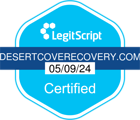
Patient Counseling Can Help Reduce Drug Abuse and Addiction
The study results were published in Substance Use and Misuse, a peer-reviewed journal. They were part of a larger study of an intervention that showed how counseling in primary care settings could help to reduce drug abuse and addiction for patients.
A total of 2,507 adult patients in Los Angeles and 2,890 in Tijuana participated in the study. The participants, who were eligible for the World Health Organization’s Alcohol, Smoking and Substance Involvement Screening Test, used a computer tablet with a touch screen to anonymously fill out the survey while in the clinic waiting room. They were also asked questions about chronic illness, healthy eating and exercise as well as drug and alcohol use.
Drug Use was Higher than Expected Among Study Participants
Researchers had expected that alcohol would be a bigger problem for patients in this population group and that drug use would be lower, according to Dr. Lillian Gelberg, the study’s lead investigator. Dr. Gelberg is a professor of family medicine at the David Geffen School of Medicine at UCLA. She noted that the problem with drug use was “very similar to problem alcohol use.”
The results of the study found that moderate-to-high alcohol use was over 15 percent in East Los Angeles. In Tijuana, it was less than 7 percent. Moderate-to-high tobacco use was 20 percent in East Los Angeles, and slightly lower in Tijuana at 16 percent.
Studies like this help to get a more rounded picture of the amount and types of substances being used in among various populations. In a time when we are losing record numbers of people to overdoses, we need all the help we can get, especially at primary care physicians.


